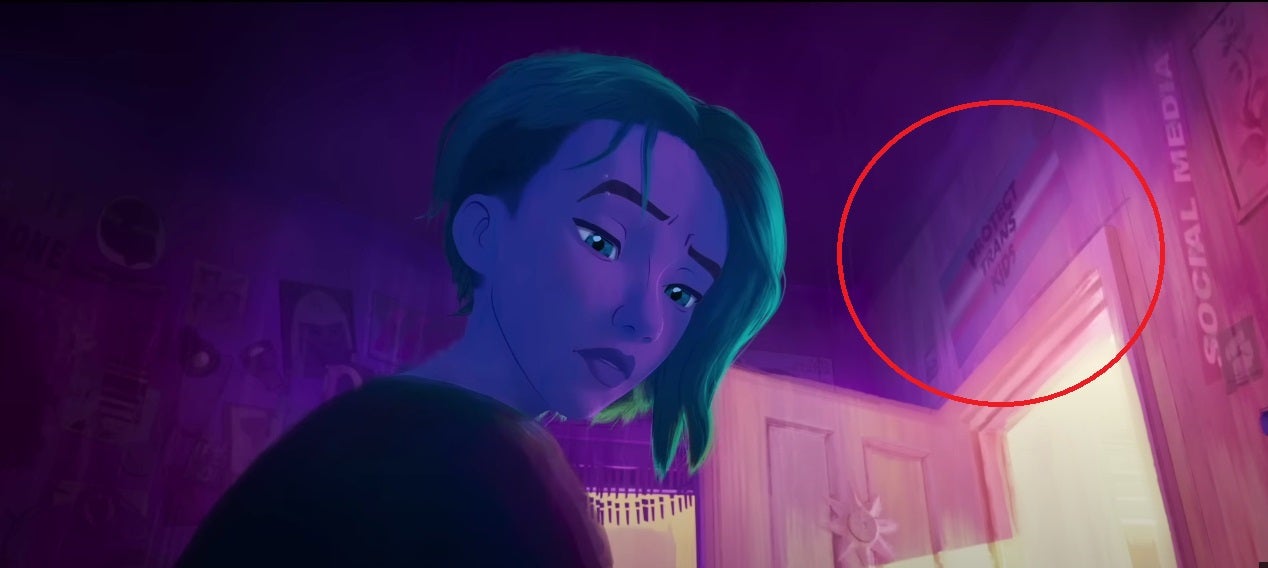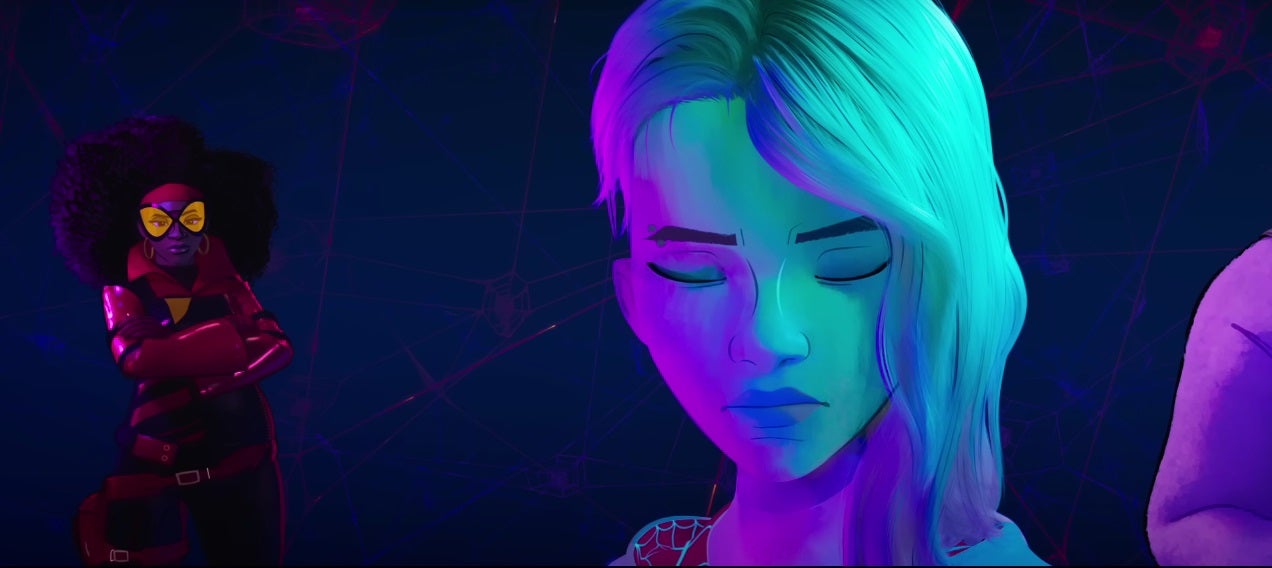Analysis
Months before Across the Spider-Verse came out, fans noticed a “Protect Trans Kids” poster in a trailer scene of Gwen Stacy’s bedroom. It’s the kind of well-meaning gesture that blockbuster storytellers sneak in when their studio overlords discourage more explicit political statements or representation, and I confess I forgot all about it until about ten minutes into the movie.
By that point, the trans subtext of Gwen’s role already felt startlingly obvious. Without saying anything outright, this message is signaled through Gwen’s color palette (the blue/pink/white of the trans pride flag) and her personal arc, which centers around hiding her secret identity from her father, a cop.
As more viewers began to discuss this interpretation on social media, it provoked a variety of reactions—both with predictable transphobic backlash and in a more complicated debate about whether queer/trans subtext is a cop-out compared to “real” representation.
While meaningful LGBTQ+ rep is still rare in blockbuster cinema, superhero movies have long been rife with queer-coding, from the homoeroticism of Batman & Robin to the coming-out narratives of the original X-Men trilogy, to more troublesome examples like the Joker‘s regressive use of queer-coded villain archetypes.
With Gwen, there’s already a lot of debate about whether she’s intended to be canonically trans, a question that doesn’t have a satisfying answer.
In the surface-level text of the movie, we know Gwen supports trans rights, but there’s no discussion of her gender identity. (Some fans also theorize that her dad wears a trans pride badge on his uniform, but it looks like it may actually be a police medal colored by Gwen’s pink/blue lighting.)

That being said, the subtext behind Gwen’s arc is still glaringly obvious. And it’s both unfair and wrongheaded to dismiss a trans-coded interpretation just because it’s based on things like color palette and metaphor.
There’s a long history of storytellers using coded narratives because it’s the only way they can explore controversial topics while hampered by censorship—one obvious example being the way Star Trek relied on allegory to discuss racism in the 1960s, or queer love and gender identity in the 1990s.
Trans subtext and present-day censorship
Tellingly, Across the Spider-Verse opens with a nod to the Comics Code Authority, a set of conservative regulations that governed American comics publishing from the 1950s to the 1990s. As a PG-rated movie with an anti-crime, pro-cop moral and no sex or gory violence, Across the Spider-Verse actually follows a lot of those old Comics Code rules. It was also released in a political climate where more subtle forms of media censorship are still in place.
Right now, trans people face horrifying oppression in America, and trans media attracts constant backlash. It’s hard to imagine Sony Pictures giving Across the Spider-Verse‘s creators the greenlight to make Gwen Stacy explicitly trans. Instead, her story plays out through metaphor, as she hides her identity from her father, who threatens her with arrest when she’s outed against her will.

In a movie that relies heavily on visual storytelling, Gwen’s world is colored in blue, pink, purple, and white, with earlier scenes leaning to a painterly blue to denote her grief and isolation. Later on, when her father accepts her identity, the color scheme perks up to a brighter hue.
Of course, this allegory can only stretch so far. Across the Spider-Verse‘s political messaging is chaotic and self-contradictory (a topic for another post), and Gwen’s eventual coming-out scene involves her comparing her Spider mask to her father’s police badge, praising him as a “good cop” even after he held her at gunpoint. Separate from what we see onscreen, at least one commentator has also called out the problematic nature of labeling Gwen a trans icon when she’s a corporate-owned entity whose original co-creator was accused of sexual misconduct.
As a crossover point between representation discourse and fandom arguments about what qualifies as “official” canon, the conversation around Gwen’s identity is full of people searching for incontrovertible proof. But that proof doesn’t exist. Queer-coded subtext is unavoidably ambiguous, and as always, people are free to interpret it how they wish—whether that’s embracing Gwen’s role as a trans allegory, or failing to notice or accept that subtext at all.



